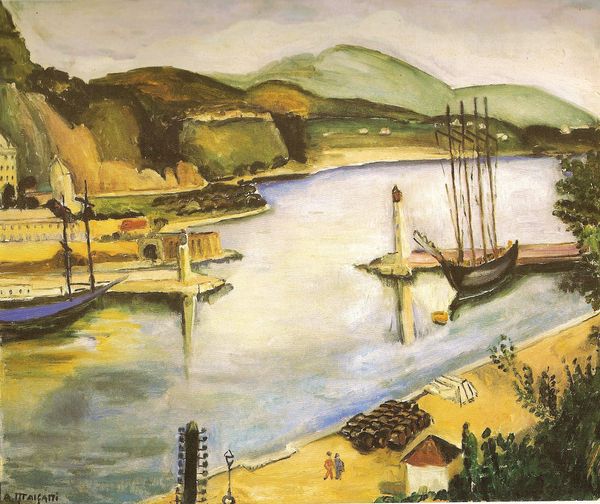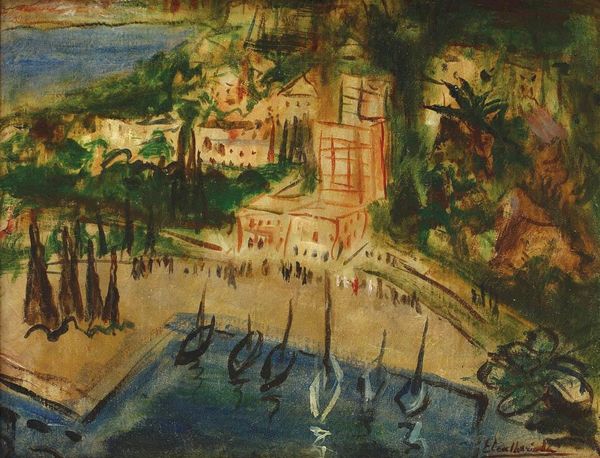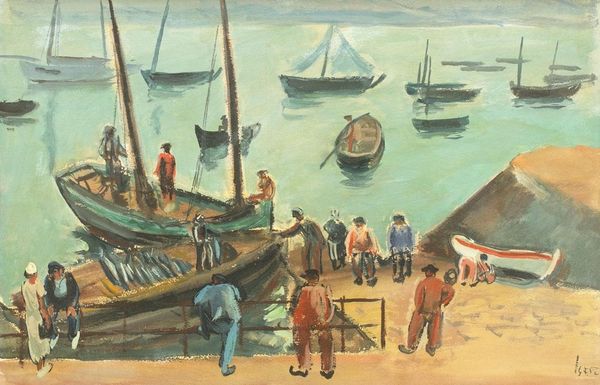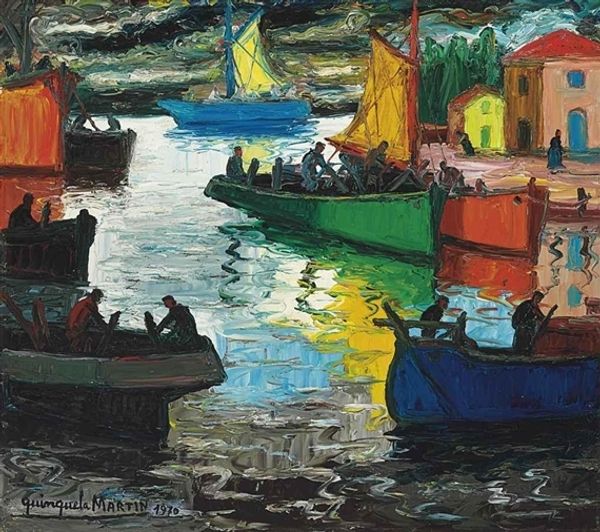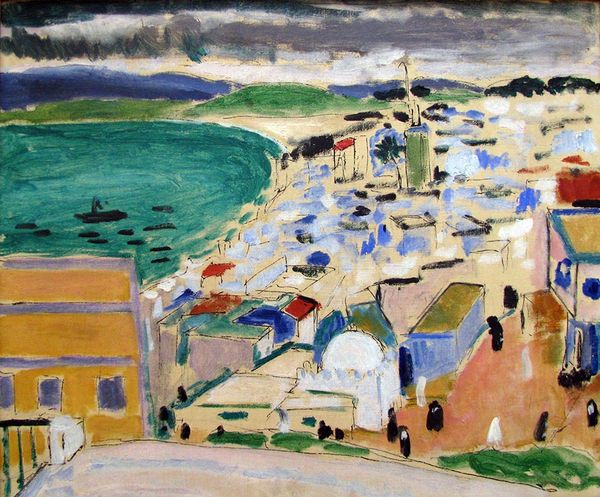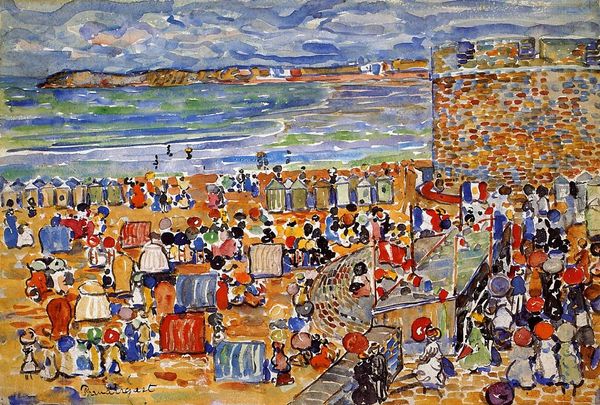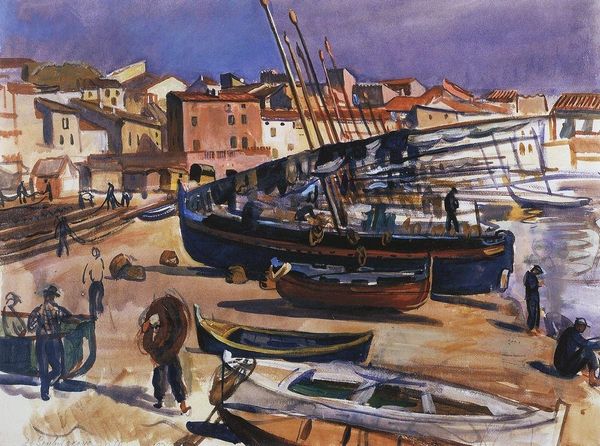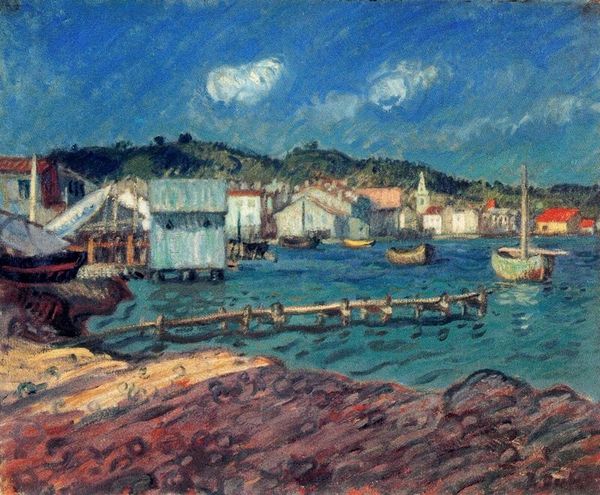
painting, oil-paint
#
painting
#
oil-paint
#
landscape
#
german-expressionism
#
figuration
#
oil painting
#
expressionism
Copyright: Public domain
Editor: Walter Gramatté’s oil painting, “Hiddensee,” from 1922, presents a striking coastal scene. I'm immediately struck by its unsettling stillness, and the strange figures along the shore, almost like onlookers to the anchored boats. What are your initial thoughts about this piece? Curator: Well, seen from a historical perspective, Gramatté was a key figure in German Expressionism, which emerged in response to widespread anxieties and alienation in early 20th century Germany. How does the setting in "Hiddensee," this sort of isolated fishing village, perhaps reflect this sentiment? Editor: It's interesting you point that out! It feels disconnected, with a somber mood; perhaps Gramatté is hinting at the struggles of this fishing community during the Interwar Period? Curator: Precisely. And note how Expressionists distorted forms and used intense colors. The rigid figures in the foreground don’t quite feel "human", do they? That abstraction really intensified emotions, hinting at the social tensions of the time. Consider the role of museums as interpreters: did they play any part in showcasing German Expressionism as a avant-garde movement? Editor: Yes, absolutely. Museums helped introduce this new, emotionally driven approach to a broader public audience, influencing social perceptions and tastes. Without such exhibitions, German Expressionism would likely have stayed on the fringes, maybe avoided scrutiny. Curator: That’s the key; museums also helped establish an "acceptable" interpretation. “Hiddensee”, initially perceived as jarring or even radical, gained its cultural status thanks to them. What have you learned looking at this through a wider scope? Editor: I've gained a much greater appreciation for how artistic movements relate to and reflect the larger social and historical context. I had previously mostly considered the artwork on its surface.
Comments
No comments
Be the first to comment and join the conversation on the ultimate creative platform.
